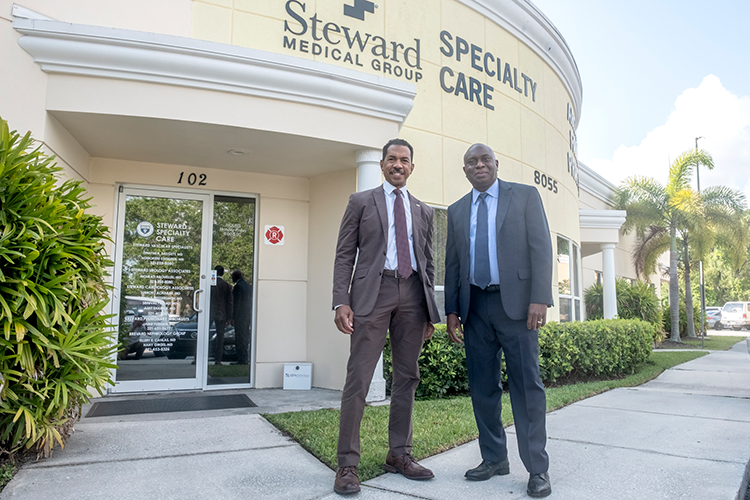
More than 6 million people in the United States age 40 and older have PAD (peripheral artery disease), according to the CDC. The condition in the legs or lower extremities is caused by the narrowing or blockage of the vessels that carry blood from the heart to the legs and is primarily caused by the buildup of fatty plaque in the arteries, which is called atherosclerosis.
Treatments include minimally invasive surgical procedures like atherectomy, which removes plaque buildup and opens narrow or blocked arteries, and drugs like cilostazol, which thins the blood and widens blood vessels, increasing blood flow to the limbs and reducing leg pain.
But Dr. Dwayne Badgett, a vascular surgeon at Steward Vascular Specialists, said lifestyle choices often are the key to successful treatment.
“I spend a lot of time during each office visit trying to convince people to stop smoking,” he said.
According to the American College of Cardiology, up to 80 percent of patients with PAD are current or former smokers, and tobacco cessation counseling is an important first step in treatment for those who still smoke.
Continuing to smoke is associated with a higher risk of disease progression, graft failure, amputation, re-stenosis after endovascular revascularization, myocardial infarction and death.
“Motivation is the most difficult part of what I do,” said Dr. Badgett. “In addition to giving up smoking, I encourage people to improve their diet, eliminating foods that cause inflammation, and to exercise, especially walking.
“Walking is difficult at first because it’s painful with this condition. But if you walk until it hurts and then stop, every couple of weeks the distance you can go will increase.”
Dr. Nowokere Esemuede, who like Dr. Badgett is a vascular surgeon at Steward Vascular Specialists, concurs.
The prevalence of PAD goes up 15 percent to 20 percent in patients who smoke, have diabetes or are elderly, Dr. Esemuede said. “Since a high LDL level is also a major contributor, statins and aspirin can be appropriate treatments.”
He adds, “One of the benefits of walking is that the body can develop new blood vessels around the blockage.”
Collateral circulation is alternate or “backup” blood vessels in your body that can take over when another artery or vein becomes blocked or damaged, providing alternative routes for blood flow.
Dr. Esemuede said symptoms of PAD include leg pain while you walk that goes away when you sit down, pain in your toes at night when you lie down, and wounds and sores on your legs that won’t heal.
According to the Yale University School of Medicine, PAD is on the rise around the world in correlation with higher rates of obesity and diabetes. And the demographic of who gets PAD is shifting. An increasing number of younger people under 65 years of age are being diagnosed with the disease.
Dr. Badgett said primary care doctors and other medical experts need to help educate people about the symptoms of PAD and how their lifestyle choices can affect the path the disease takes. “I have patients who never have to have advanced treatment, but they must be willing to make the necessary changes to ensure that happens.”
According to PennMedicine, the other main risk factor for PAD – in addition to the previously mentioned smoking, obesity, diabetes and lack of exercise – is a family history of heart or vascular disease.
The American Heart Association reports that PAD can be dangerous because blockages can restrict circulation to limbs and organs. Without adequate blood flow, your vital organs, arms, legs and feet can suffer damage. Left untreated, the tissue can become infected or die, a condition called gangrene. Limb amputation is a serious complication of PAD. Left untreated, it may also increase your risk of coronary artery disease, heart attack and stroke.
Dr. Dwayne Badgett graduated from Boston University School of Medicine, did his residency at Boston Medical Center, fellowship at Temple University and additional residency at Temple University Hospital. Dr. Nowokere Esemuede graduated from Howard University School of Medicine, did his residency at Howard University Hospital and fellowship at Virginia Commonwealth University. Both are vascular surgeons at Steward Vascular Specialists, 8055 Spyglass Hill Road, Suite 102, Melbourne. 321-255-8080, Both are accepting new patients.




Comments